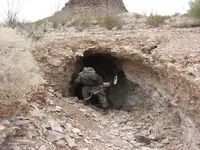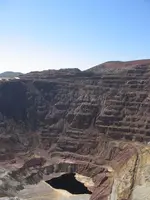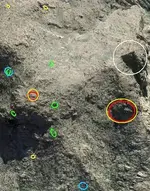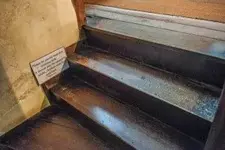Oroblanco
Gold Member
- Joined
- Jan 21, 2005
- Messages
- 7,841
- Reaction score
- 9,872
- Golden Thread
- 0
- Location
- DAKOTA TERRITORY
- Detector(s) used
- Tesoro Lobo Supertraq, (95%) Garrett Scorpion (5%)
Roy,
As I said, "The Jesuit Order had many enemies around the world and probably double the norm in Mexico. All were busy looking for any excuse to bend the king's ear against the order. I still maintain that any secret mining would have been very difficult for them to pull off."
"Why" is always an open ended question. It calls for conjecture, as proof is non-existent. I don't really have a dog in this fight, although I was raised Catholic, I am no fan of the religion. I have serious questions about Father Kino sleeping with young Indian boys.......for foot warmers.
Why the Jesuits said this or didn't say that is of no consequence to me. The vagaries of memory and recorded history leave many questions unanswered. Some will fill in the blanks to suit their own beliefs, much as you and I do. That leaves plenty of room for debate.
Also plenty of room for both of our opinions and maybe a few others as well.
Take care,
Joe
I get your point, and our little debate here will not affect a single word in history books. To a degree, I have had the impression this thread was literally "for the record" for all those undecided on the issue, and surely there is enough here for almost any viewpoint. Unfortunately, the two extremes will likely continue, so that some people will still keep looking for the vast mines and massive fortunes, while others will dismiss the idea entirely that any kind of mining or amassing of wealth happened.
It has been a most interesting discussion for me, thank you for your part in it, despite our differences and occasional barbs which I do not take personally and hope the same with you (the written word always comes across much more harsh than spoken, unfortunately) and it has been very educational for me. In fact this has turned into a rather 'lifetime' curiosity for me, as I suspect there may be something absolute which may turn up at some point. It also gives me the excuse to buy more books too. Heck I still have not got a copy of the Rim of Christendom yet, had borrowed one via the library system but other books keep getting ahead of it in the queue of books to buy.
Mowry wrote that he had found papers on over 100 mines run by the padres in Arizona (this would include the Franciscans as well) and another early source mentions some 200+ mines in Arizona (Spanish) and not all of these mines have been found today. I expect that these mines will look more like this one:

than this:

- but I would not even be too surprised if a church mine were found in the Superstitions, although I would more readily believe it to be Franciscan than Jesuit. (Father Garces was especially active in exploring, and quite popular with many of the tribes except the Yumas, remember Kino and Nentvig mentioning about the mineral discoveries)
Take care of yourself Joe, over the years I feel like we have become friends and I can't afford to lose any!
 Kidding aside, your recent episode could be a sort of early 'alarm' from your internal system that something needs to be taken care of. I am still hoping to take you to show you the lost Standoff Bar mine some day, along with roasting hot dogs after a tour of Mt Rushmore. I have not found the mine yet so need you to hang in there buddy!
Kidding aside, your recent episode could be a sort of early 'alarm' from your internal system that something needs to be taken care of. I am still hoping to take you to show you the lost Standoff Bar mine some day, along with roasting hot dogs after a tour of Mt Rushmore. I have not found the mine yet so need you to hang in there buddy! Well I am getting carried away here so will close. I am still hoping we can talk Don Jose' el Tropical Tramp himself, to come to the next Dutch hunters rendezvous. If you are reading this mi compadre Jose', I do realize that you do not consider yourself a Dutch hunter, but in effect you are, because you have participated in the research and discussion, besides your own explorations and exploits. Besides, where else will we ever be able to all get together in one place, without bullets flying? (hee hee) I would hope that you could talk El Tigre into coming too, as you know these things are not all-male by any stretch of the imagination (I think there have been female treasure hunters about as long as there have been male treasure hunters, not a pursuit that is strictly limited to one gender) and besides, I now have to serve you the real Arbuckles Ariosa, ala calceti'n. I am still hoping and planning to come to Sonora, but may not be able to do it this year (due to Beth and the postal service) so I am keeping fingers crossed.
Good luck and good hunting to you Joe and Jose and all of you reading our long, sometimes heated but hopefully always interesting discussion; I hope you find the treasures that you seek.
Roy ~ Oroblanco







